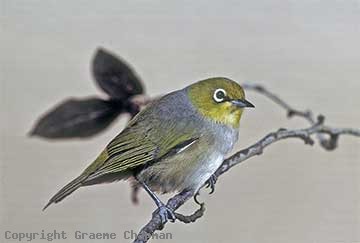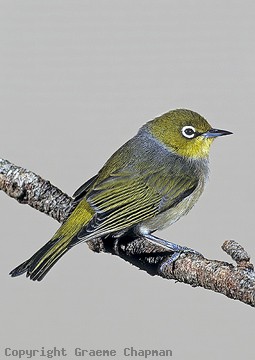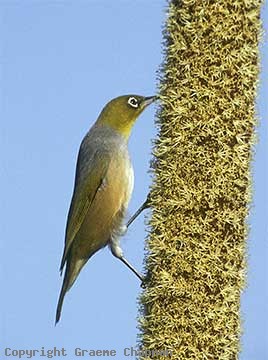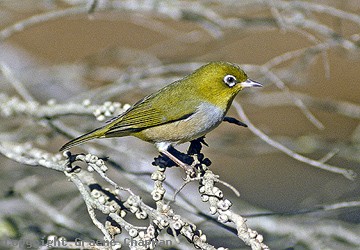
The Silvereye is one of the most familiar native birds in parks and gardens throughout eastern and southern Australia, particularly near the coast. Silvereyes belong to the White-eye family which numbers nearly 100 species but only six occur in our region. The Silvereye is the most widespread and variable of these and currently there are eight subspecies recognised.
Years ago the Silvereye was divided into three species, but current thinking only admits one. In some areas such as south-western Australia and northern Queensland, Silvereyes are all resident. However, throughout much of eastern Australia there are two types, one resident and one migratory. These migrant Silvereyes, often called "Tasmanian type" are quite distinctive (see pics 574211-218 and 574222D with chestnut flanks and compare with resident Sydney birds pics 574201-202 with pale buff flanks). They leave Tasmania (and other far south-eastern parts) in winter and migrate north in large flocks. I have heard migrating Silvereyes heading north high overhead in Canberra at midnight in winter.
Many years ago I was a registered bird-bander and took part in one of the largest studies ever undertaken of a single species in Australia. I used to catch and band Silvereyes at North Manly in Sydney. In that suburban environment I regularly caught a sample of the local resident birds throughout the year. Meanwhile, only 2 kms away out in the local bushland, winter flocks of "Tasmanian type" Silvereyes used to visit but in my experience, they never mixed with the locals. These two distinctive types are currently classed as a single species, but in my opinion, that warrants further investigation.
Like honeyeaters, Silvereyes have a brush-tipped tongue, ideal for feeding on nectar - they also glean foliage for insects and feed on soft ripe fruit like grapes which they pierce with their pointed beak, so they are regarded as a pest in vineyards. All members of the white-eye family lay distinctive, pale bluish coloured eggs.




